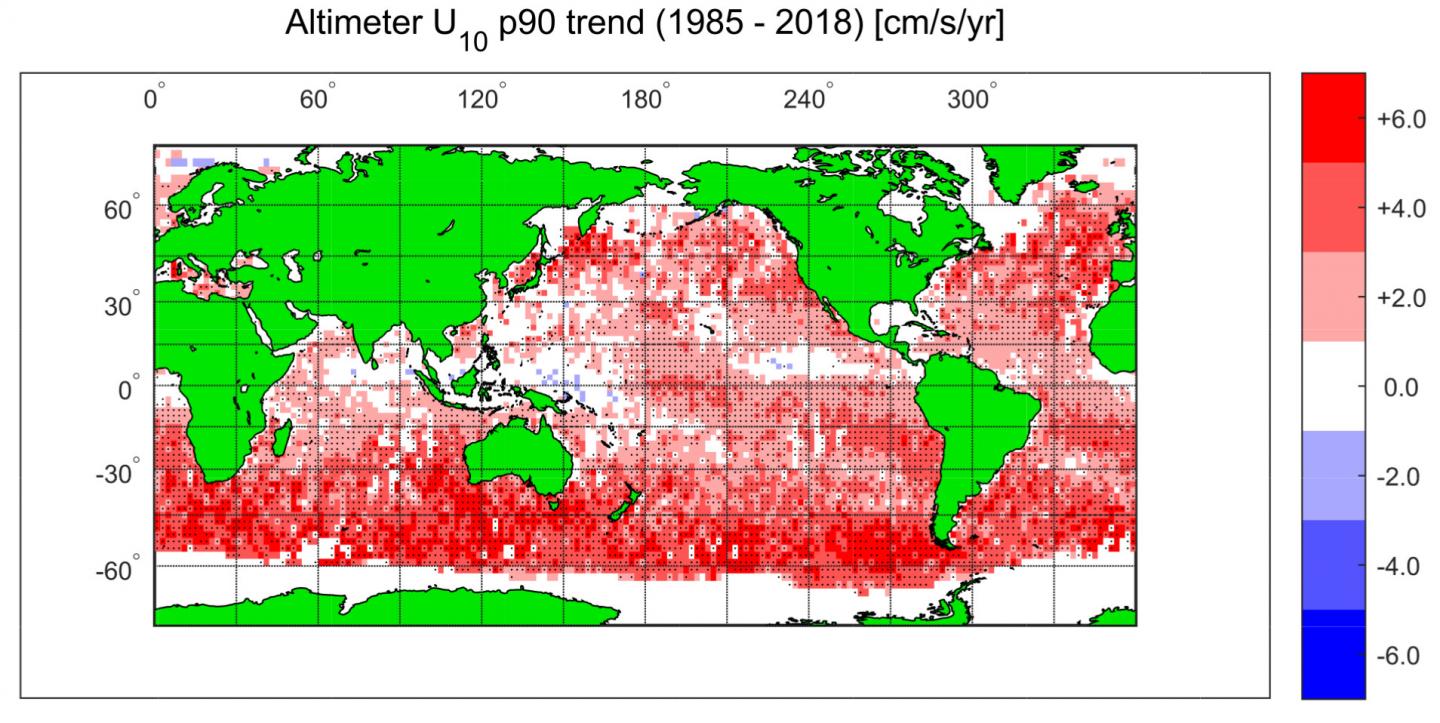
Credit: Professor Ian Young
Extreme ocean winds and wave heights are increasing around the globe, with the largest rise occurring in the Southern Ocean, University of Melbourne research shows.
Researchers Ian Young and Agustinus Ribal, from the University’s Department of Infrastructure Engineering, analysed wind speed and wave height measurements taken from 31 different satellites between 1985-2018, consisting of approximately 4 billion observations.
The measurements were compared with more than 80 ocean buoys deployed worldwide, making it the largest and most detailed dataset of its type ever compiled.
The researchers found that extreme winds in the Southern Ocean have increased by 1.5 metres per second, or 8 per cent, over the past 30 years. Extreme waves have increased by 30 centimetres, or 5 per cent, over the same period.
As the world’s oceans become stormier, Professor Young warns this has flow on effects for rising sea levels and infrastructure.
“Although increases of 5 and 8 per cent might not seem like much, if sustained into the future such changes to our climate will have major impacts,” Professor Young said.
“Flooding events are caused by storm surge and associated breaking waves. The increased sea level makes these events more serious and more frequent.
“Increases in wave height, and changes in other properties such as wave direction, will further increase the probability of coastal flooding.”
Professor Young said understanding changes in the Southern Ocean are important, as this is the origin for the swell that dominates the wave climate of the South Pacific, South Atlantic and Indian Oceans.
“Swells from the Southern Ocean determine the stability of beaches for much of the Southern Hemisphere, Professor Young said.
“These changes have impacts that are felt all over the world. Storm waves can increase coastal erosion, putting costal settlements and infrastructure at risk.”
International teams are now working to develop the next generation of global climate models to project changes in winds and waves over the next 100 years.
“We need a better understanding of how much of this change is due to long-term climate change, and how much is due to multi-decadal fluctuations, or cycles,” Professor Young said.
The research was published today in Science.
###
Media Contact
Holly Bennett
[email protected]
Related Journal Article
http://dx.



